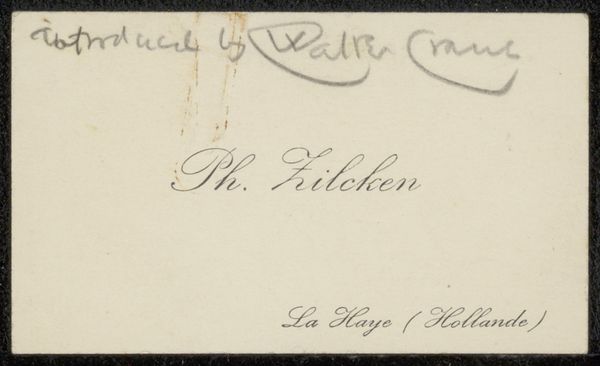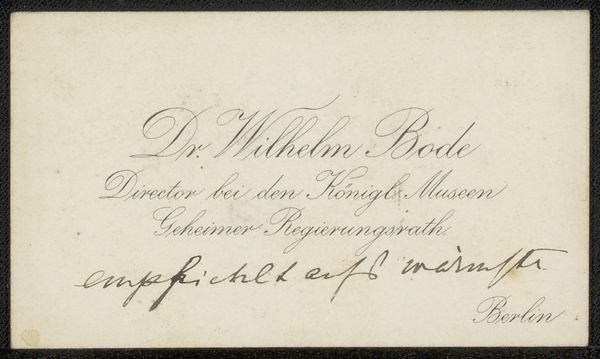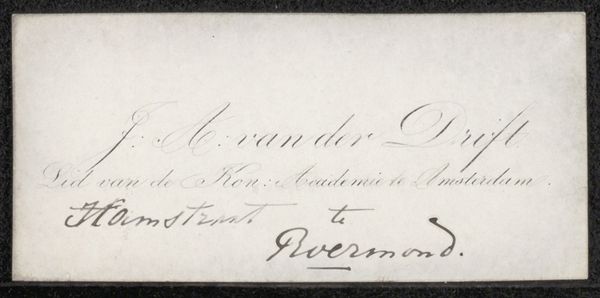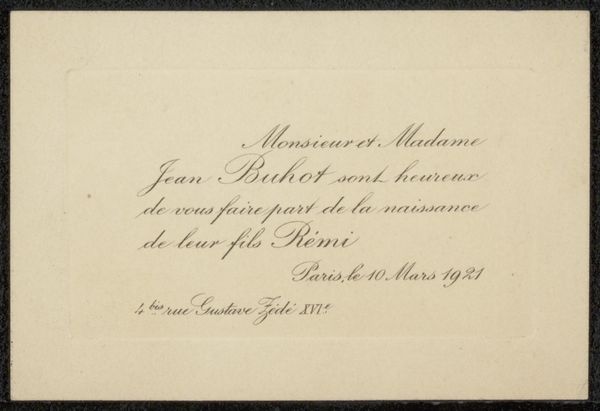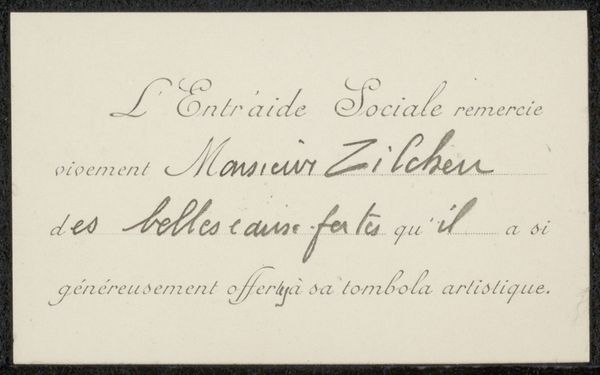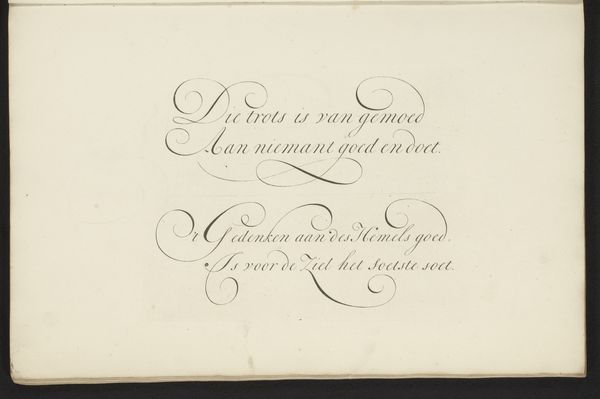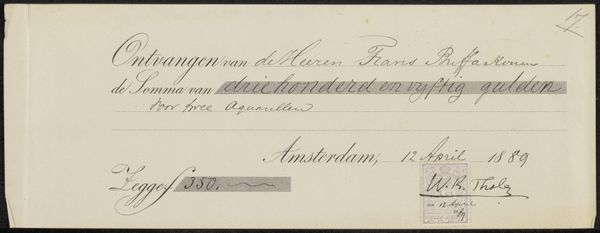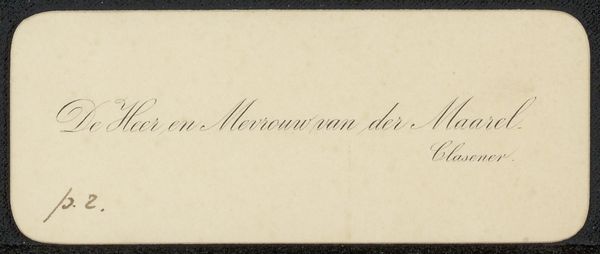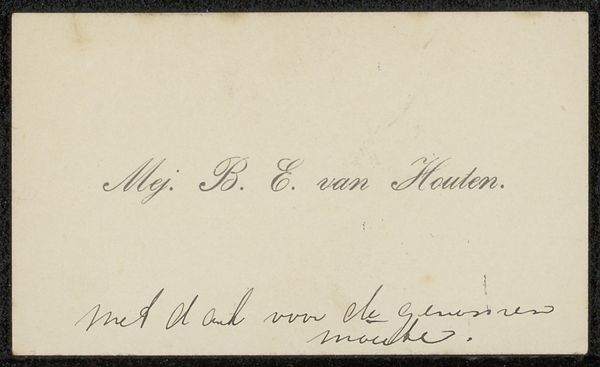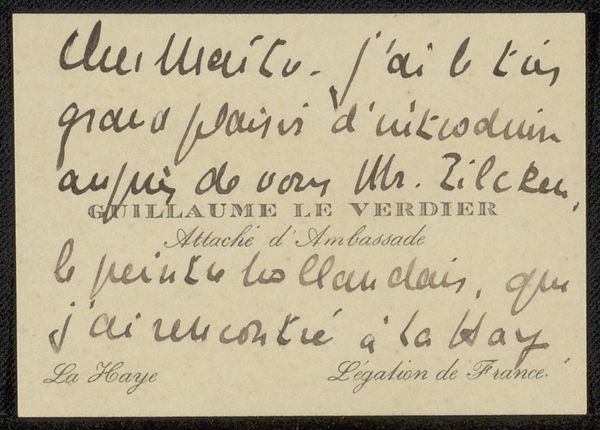
drawing, graphic-art, typography
#
drawing
#
graphic-art
#
type repetition
#
aged paper
#
script typography
#
hand-lettering
#
hand drawn type
#
hand lettering
#
typography
#
hand-drawn typeface
#
fading type
#
thick font
#
golden font
Copyright: Rijks Museum: Open Domain
Editor: Here we have "Visitekaartje uit archief Philip Zilcken," or "Visiting card from the archive of Philip Zilcken," dating from around 1867 to 1930. It's a drawing and a piece of graphic art currently held in the Rijksmuseum. It strikes me as very formal and refined, especially with that script typography. What do you see in this piece from a historical perspective? Curator: It's fascinating how something as simple as a visiting card can tell us so much. The formality you noticed speaks volumes about social etiquette of the late 19th and early 20th centuries. Think about it: the card isn't just a name; it's a carefully constructed statement of status and affiliation. Zilcken clearly wants to showcase not only his name but also his Chevalier titles. Editor: So, it's less about simply identifying someone and more about projecting an image? Curator: Precisely. The script, the French language, and the explicit listing of honours—"Chevalier des Ordres"—all signal membership in elite circles. We need to ask: what institutions and power structures are being invoked here? Consider the social function of art – who does this card aim to impress, and what values are being communicated about artmaking in Dutch society during the time of growing art markets? Editor: I never considered the power dynamics embedded in something so small! It’s like a tiny, carefully crafted performance. Curator: Exactly. And the fact that this card ended up in an archive is telling, too. It transforms from a piece of social currency into a historical artifact, inviting us to analyze the politics of imagery and the public role of art. We move from intimate exchange to institutional collection and public presentation. Editor: Wow, that's quite a journey for a little card. I see how museums shape the way we understand even the smallest artworks now. Curator: Indeed. By understanding the social and institutional context, we gain a much deeper appreciation. I’ve really enjoyed sharing these ideas!
Comments
No comments
Be the first to comment and join the conversation on the ultimate creative platform.
